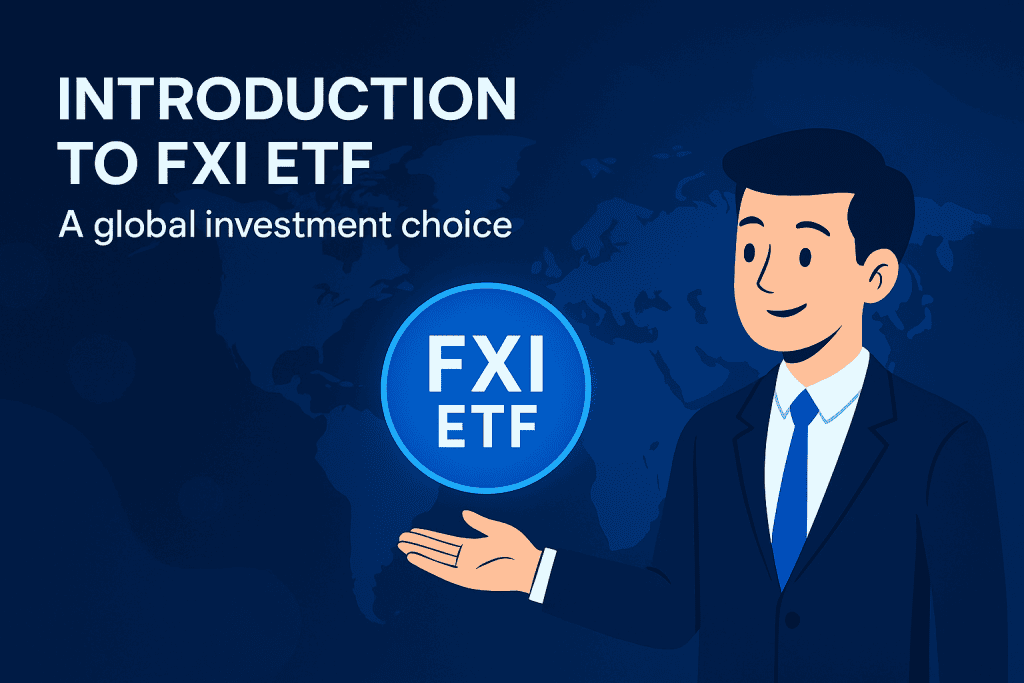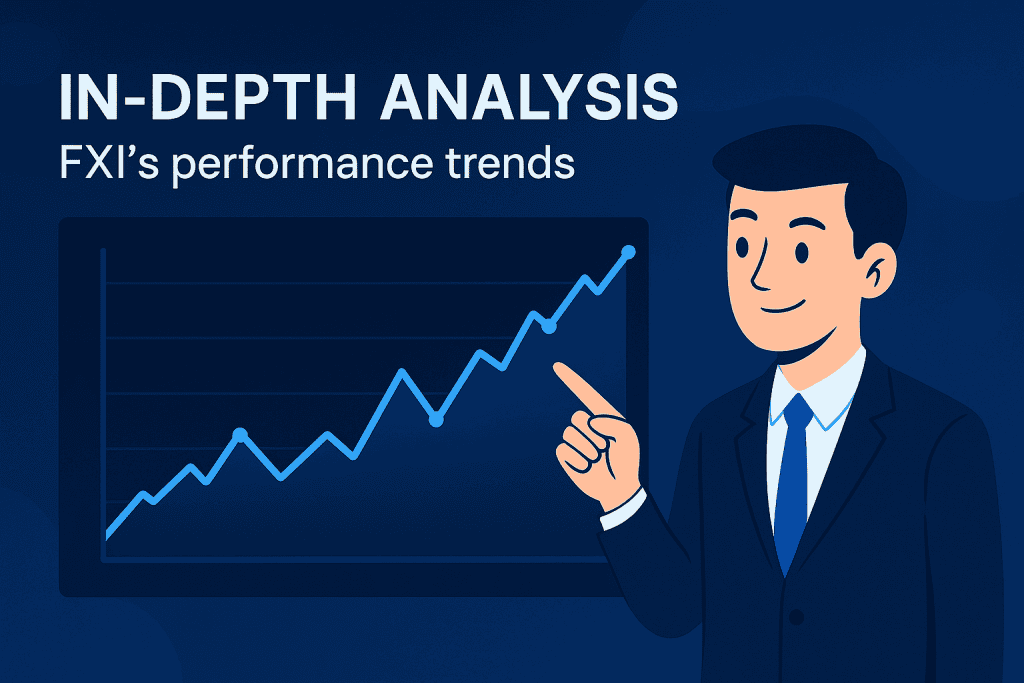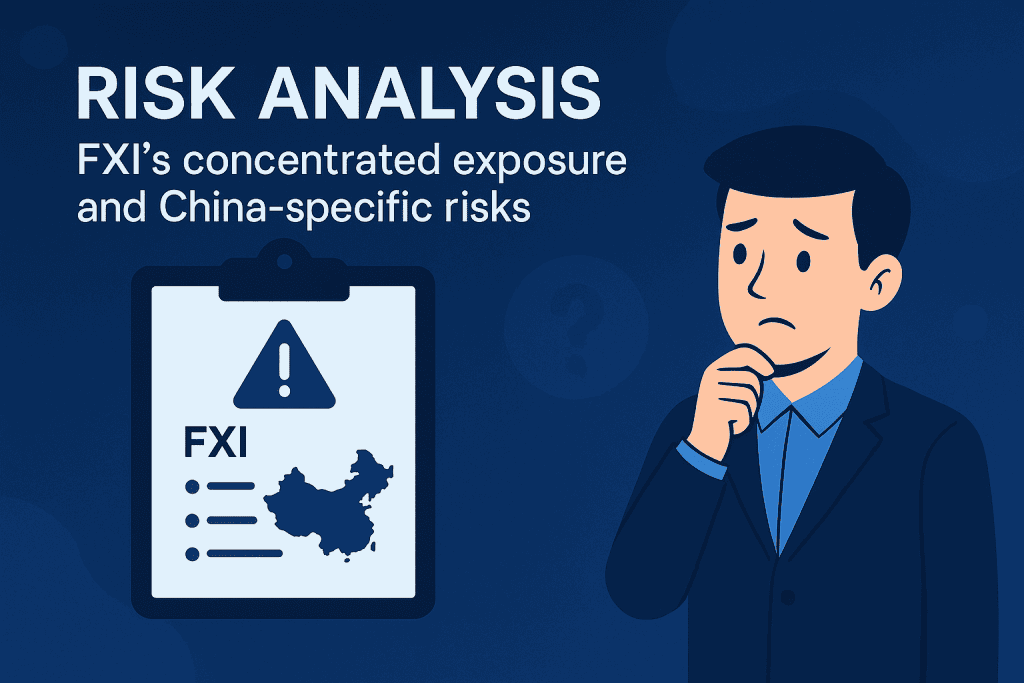
When it comes to international investing, FXI stands out as a bold and accessible option. It is one of the most popular exchange-traded funds (ETFs) that offers exposure to China’s largest and most influential companies, making it a compelling choice for investors seeking global diversification. With the world’s second-largest economy constantly evolving, many investors today are reassessing their international strategies to stay competitive and manage risk wisely.
Reviewing FXI right now is especially relevant because shifts in global trade, technology, and regulations are reshaping China’s market landscape. This review aims to guide you through the fund’s core strategy, performance trends, and risk factors, helping you determine if it fits your broader investment plan. By breaking down its strengths and potential pitfalls, we provide a clear, practical perspective so you can make well-informed decisions and strengthen your portfolio’s international exposure.
Overview of FXI
Before we explore the technical details, let’s take a closer look at FXI and why it captures so much investor attention.
This exchange-traded fund (ETF) is designed to track the FTSE China 50 Index, offering access to the 50 largest and most liquid Chinese companies listed on the Hong Kong Stock Exchange. Issued by iShares, the product allows investors to tap into major players without the need to invest directly in individual stocks or open international trading accounts. The ticker symbol is FXI, and it carries an expense ratio of 0.74 percent, making it relatively affordable compared to actively managed funds focused on similar markets.
What makes this ETF stand out is its combination of size, liquidity, and market access. With heavyweights like Tencent, Alibaba, and China Construction Bank included in its portfolio, the fund serves as a convenient and accessible vehicle for those seeking to participate in China’s economic growth. It is best suited for investors who want a simplified and cost-effective way to gain exposure to the dynamic economy through large-cap, blue-chip companies. It is widely used not only by individuals but also by institutional players due to its strong trading volume and deep market presence.
In-Depth Analysis of FXI
Let’s unpack the details with a fresh lens and a touch of vivid language.
Design and Strategy
This fund is built with simplicity in mind. It closely follows the FTSE China 50 Index, giving investors straightforward exposure to the country’s largest and most traded companies. This includes major players like Tencent, Alibaba, and China Construction Bank. The product does not try to chase niche sectors or specialized themes. Instead, it focuses on stability and size, offering a way to harness the broader movements of the Chinese economic landscape. For investors, this means they can access top-tier companies in one convenient package without the need to pick individual stocks.
Performance Review

Over the years, the performance has reflected the swings and shifts of China’s evolving economy. While the five-year average annual return hovers around 2 to 3 percent, the journey has been anything but smooth. Market volatility, trade tensions, and regulatory challenges have added bumps along the way. Yet, it remains appealing for those who want targeted exposure to the large-cap sector. When added thoughtfully to a diversified portfolio, it can enhance international reach and bring growth potential, though it is important to balance expectations given the market’s unpredictability.
Usability and Investor Access
This fund’s real-world usability is one of its strongest selling points. Investors can access it easily through major brokerage platforms without needing international accounts or jumping through complex regulatory hoops. Its high daily trading volume means there is always strong liquidity, making it simple to enter or exit positions. This makes it attractive not only for individual investors but also for institutional players seeking to manage large sums with minimal slippage. The accessible nature, combined with a solid market reputation, enhances its appeal across investor types.
Risks and Considerations

Even though the product offers valuable access to the Chinese market, it carries several key risks. Government regulations can change rapidly, introducing sudden uncertainties that can impact holdings. Moreover, the concentrated focus on large-cap stocks limits sector and size diversification, making it vulnerable if those specific companies underperform. For those wanting broader exposure, pairing with smaller-cap or sector-specific funds might offer better balance. It is essential to understand these risks fully before committing, as the Chinese market can be both rewarding and unpredictable.
FXI Comparison
When lining up FXI against peers, the differences become clear.
| Feature | FXI | MCHI | GXC |
|---|---|---|---|
| Focus | 50 largest Chinese stocks | Broad China market | Broad China market |
| Expense Ratio | 0.74 percent | 0.59 percent | 0.66 percent |
| Holdings Count | 50 | 600 plus | 700 plus |
| Top Holdings Weight | Heavily concentrated | More diversified | More diversified |
| Liquidity | High | Moderate | Moderate |
It shines when you want concentrated exposure, but competitors like MCHI or GXC offer broader diversification across sectors and market caps.
FXI Pros and Cons
| Pros | Cons |
|---|---|
| High liquidity | High concentration risk |
| Strong brand recognition (iShares) | Limited sector diversification |
| Simple access to Chinese large caps | Heavily influenced by Chinese policy |
| Institutional investor support | Expense ratio on the higher side |
Despite the drawbacks, FXI holds a firm spot for those looking to play the big names in China’s market.
Conclusion
Overall, this fund serves as a convenient and practical gateway into China’s dynamic stock market, offering investors an easy way to gain exposure to some of the country’s largest and most influential companies. Its straightforward design, solid liquidity, and focus on large-cap giants make it an appealing tool for those looking to diversify their international holdings without the complexity of buying individual foreign stocks. However, it is important to recognize that the concentrated exposure comes with notable risks, particularly regarding regulatory shifts and sector overconcentration.
While it offers strong potential for long-term growth, this ETF works best as part of a well-rounded investment plan that includes a mix of global and emerging market assets. Investors should carefully evaluate how it fits into their risk tolerance and portfolio goals before committing. When used thoughtfully, the fund can play a valuable supporting role in building a globally diversified investment strategy.
FXI Rating
It is a reliable, liquid fund, but best used as part of a diversified strategy rather than a standalone bet.
In wrapping up, FXI scores a solid 4 out of 5 stars.
FAQs
What makes FXI a strong choice for economic analysis?
FXI focuses on China’s economic giants, offering a window into one of the world’s largest economies. For economic analysis, it is invaluable because it reflects macro trends, policy impacts, and market shifts specific to China.
How does FXI compare to other emerging market ETFs?
Unlike broader emerging market ETFs, FXI concentrates solely on Chinese large caps. This sharp focus makes it appealing for targeted economic plays but less useful for those seeking broad exposure across developing countries.
Is FXI suitable for long-term investment plans?
Yes, FXI can fit into long-term investment plans, especially for investors who believe in China’s sustained growth. However, it is important to combine it with other assets to hedge against concentration risks.
Resources
- FXI Official Website. FXI Official Website
- iShares. iShares China Large-Cap ETF
- Yahoo Finance. FXI Quote
- Nasdaq. FXI Overview
- Morningstar. FXI Quote
- Bloomberg. FXI Quote
